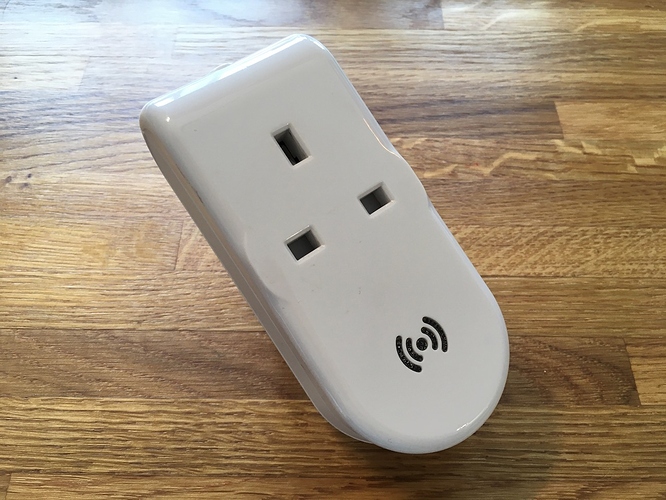Is this what you need?
dev:3 2020-06-25 12:26:07.967 infoZigbee parsed:[raw:catchall: C216 00EF 02 02 0040 00 C475 01 00 0000 81 01 0000, profileId:C216, clusterId:00EF, clusterInt:239, sourceEndpoint:02, destinationEndpoint:02, options:0040, messageType:00, dni:C475, isClusterSpecific:true, isManufacturerSpecific:false, manufacturerId:0000, command:81, direction:01, data:[00, 00]]
dev:3 2020-06-25 12:26:02.962 infoZigbee parsed:[raw:catchall: C216 00F0 02 02 0040 00 C475 01 00 0000 FB 01 1F1699CB041C129802DDFF0100, profileId:C216, clusterId:00F0, clusterInt:240, sourceEndpoint:02, destinationEndpoint:02, options:0040, messageType:00, dni:C475, isClusterSpecific:true, isManufacturerSpecific:false, manufacturerId:0000, command:FB, direction:01, data:[1F, 16, 99, CB, 04, 1C, 12, 98, 02, DD, FF, 01, 00]]
dev:3 2020-06-25 12:25:57.911 infoZigbee parsed:[raw:catchall: C216 00EF 02 02 0040 00 C475 01 00 0000 81 01 0000, profileId:C216, clusterId:00EF, clusterInt:239, sourceEndpoint:02, destinationEndpoint:02, options:0040, messageType:00, dni:C475, isClusterSpecific:true, isManufacturerSpecific:false, manufacturerId:0000, command:81, direction:01, data:[00, 00]]
dev:3 2020-06-25 12:25:47.945 infoZigbee parsed:[raw:catchall: C216 00EF 02 02 0040 00 C475 01 00 0000 81 01 0000, profileId:C216, clusterId:00EF, clusterInt:239, sourceEndpoint:02, destinationEndpoint:02, options:0040, messageType:00, dni:C475, isClusterSpecific:true, isManufacturerSpecific:false, manufacturerId:0000, command:81, direction:01, data:[00, 00]]
dev:3 2020-06-25 12:25:37.893 infoZigbee parsed:[raw:catchall: C216 00EF 02 02 0040 00 C475 01 00 0000 81 01 0000, profileId:C216, clusterId:00EF, clusterInt:239, sourceEndpoint:02, destinationEndpoint:02, options:0040, messageType:00, dni:C475, isClusterSpecific:true, isManufacturerSpecific:false, manufacturerId:0000, command:81, direction:01, data:[00, 00]]
dev:3 2020-06-25 12:25:36.914 infoZigbee parsed:[raw:catchall: C216 00EF 02 02 0040 00 C475 01 00 0000 82 01 00000000CC32010000, profileId:C216, clusterId:00EF, clusterInt:239, sourceEndpoint:02, destinationEndpoint:02, options:0040, messageType:00, dni:C475, isClusterSpecific:true, isManufacturerSpecific:false, manufacturerId:0000, command:82, direction:01, data:[00, 00, 00, 00, CC, 32, 01, 00, 00]]
dev:3 2020-06-25 12:25:32.936 infoZigbee parsed:[raw:catchall: C216 00F0 02 02 0040 00 C475 01 00 0000 FB 01 1F1621CB041C129802DDFF0100, profileId:C216, clusterId:00F0, clusterInt:240, sourceEndpoint:02, destinationEndpoint:02, options:0040, messageType:00, dni:C475, isClusterSpecific:true, isManufacturerSpecific:false, manufacturerId:0000, command:FB, direction:01, data:[1F, 16, 21, CB, 04, 1C, 12, 98, 02, DD, FF, 01, 00]]
dev:3 2020-06-25 12:25:27.893 infoZigbee parsed:[raw:catchall: C216 00EF 02 02 0040 00 C475 01 00 0000 81 01 0000, profileId:C216, clusterId:00EF, clusterInt:239, sourceEndpoint:02, destinationEndpoint:02, options:0040, messageType:00, dni:C475, isClusterSpecific:true, isManufacturerSpecific:false, manufacturerId:0000, command:81, direction:01, data:[00, 00]]
dev:3 2020-06-25 12:25:17.888 infoZigbee parsed:[raw:catchall: C216 00EF 02 02 0040 00 C475 01 00 0000 81 01 0000, profileId:C216, clusterId:00EF, clusterInt:239, sourceEndpoint:02, destinationEndpoint:02, options:0040, messageType:00, dni:C475, isClusterSpecific:true, isManufacturerSpecific:false, manufacturerId:0000, command:81, direction:01, data:[00, 00]]
dev:3 2020-06-25 12:25:12.315 debuggetting info for unknown Zigbee device...
I know that there's a 'lock' mode (where the button on the top is disabled) and that the device also reports temperature information, though somewhat skewed given the warmth generated by the electronics.
I used to use a bunch of Python scripts to control these for a little while; that one I've linked to includes some information about the lock mode and other functions.






 . I suspected you may have a issue with the mixing and I think separation is the right way to go. With the new C-7 announcement I'll be getting 2 and doing just that so I can run the problem lamps and z-wave devices on one hub. Then ZigBee 3.0 and z-wave plus on the other.
. I suspected you may have a issue with the mixing and I think separation is the right way to go. With the new C-7 announcement I'll be getting 2 and doing just that so I can run the problem lamps and z-wave devices on one hub. Then ZigBee 3.0 and z-wave plus on the other.
